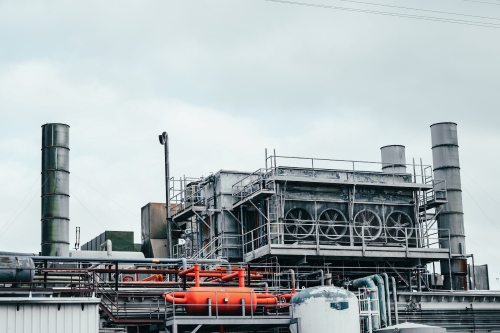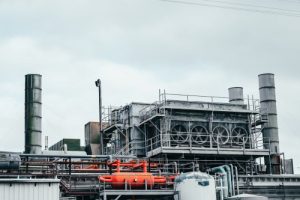High-Temperature Coatings for Extreme Environments

Introduction
High-temperature coatings are specialized formulations designed to withstand and protect surfaces when they are exposed to elevated temperatures, corrosive atmospheres, and other challenging conditions. These coatings play a crucial role in extending the lifespan, enhancing durability, and improving the performance of materials subjected to extreme heat.

Let's delve into the key aspects of high-temperature coatings. Hope that you can find the perfect material for your business and research.
Understanding High-Temperature Coatings
High-temperature coatings act as thermal shields. They preserve the structural integrity of materials in extreme environments without compromising their performance. Whether applied to aerospace components, industrial furnaces, or chemical processing equipment, high-temperature coatings play an indispensable role in safeguarding materials against the relentless impact of heat and environmental challenges.
Related reading: A List Of Heat-Resistant Materials
Types of High-Temperature Coatings:
- Ceramic Coatings: Formulated with ceramic particles, these coatings provide excellent thermal insulation and resistance to high temperatures. They are commonly used in exhaust systems, engine components, and industrial furnaces.
- Epoxy Phenolic Coatings: These coatings are suitable for applications requiring resistance to both high temperatures and corrosive chemicals. Epoxy phenolic coatings find use in chemical processing equipment and pipelines.
- Silicone Coatings: Known for their flexibility, silicone coatings can withstand temperature extremes. They often find use in automotive exhaust systems, industrial ovens, and heat exchangers.
- Thermal Barrier Coatings (TBCs): TBCs are useful in aerospace applications to protect components from extreme temperatures, such as those experienced during atmospheric re-entry.
Application Techniques:
High-temperature coatings employ various techniques, including spraying, brushing, dipping, and powder coating.
- Spraying: There are airless spray and thermal spray. The former creates a fine spray that is evenly distributed over the substrate. The latter is particularly effective for high-temperature applications.
- Brushing: Brush application involves manually applying the coating using brushes. This technique is suitable for smaller components or areas where precision application is required.
- Dipping: This technique is efficient for coating complex shapes and large quantities of small parts simultaneously.
- Powder Coating: The powder form is electrostatically charged and sprayed onto the substrate. The substrate is then cured in an oven. So, the powder can melt and form a durable coating.
The choice of application technique depends on the nature of the substrate and the specific characteristics of the coating. Spraying is often preferred for large surfaces or complex geometries, while brushing and dipping may be suitable for smaller components or intricate details. Powder coating is a popular choice for achieving a consistent and durable finish, especially in industries where a uniform coating thickness is crucial for optimal performance.
Benefits of High-Temperature Coatings
High-temperature coatings offer a range of advantages. Therefore, they are essential in various industries facing extreme heat and challenging environmental conditions:
1. Temperature Resistance:
- The primary function of such coatings is to provide resistance against elevated temperatures. These coatings’ temperature resistance is well beyond that of conventional coatings. They have become ideal for applications in industries such as aerospace, automotive, and energy.
2. Corrosion Protection:
- Many high-temperature environments involve corrosive elements that can speed up material degradation. High-temperature coatings act as a protective barrier. They prevent corrosion and oxidation. More importantly, they enhance the structural integrity of the coated surfaces.
3. Others
- Extended Component Life: They contribute to the extended life of critical components. This, in turn, reduces maintenance frequency and replacement costs.
- Improved Efficiency: Their application enhances efficiency by preventing material deterioration. This contributes to consistent performance and reduced downtime.
- Versatility in Applications: From aerospace components to industrial furnaces and automotive exhaust systems, these coatings adapt to a wide range of environments and materials.
Applications of High-Temperature Coatings:
1. Aerospace Applications:
- High-temperature coatings are extensively used in the aerospace industry. They aim to protect components exposed to extreme thermal conditions. This includes turbine blades, exhaust systems, and components of spacecraft re-entry vehicles.
2. Industrial Furnaces and Equipment:
- In industrial settings, high-temperature coatings are applied to furnaces, boilers, and equipment facing intense heat. These coatings enhance heat resistance, prevent corrosion, and contribute to the overall longevity of the equipment.
3. Automotive Exhaust Systems:
- Automotive exhaust systems operate at high temperatures, and coatings are applied to components such as exhaust manifolds and mufflers. These coatings provide thermal insulation and protect against corrosion.
Challenges and Innovations:
Challenges in high-temperature coatings include maintaining adhesion under extreme conditions, addressing thermal expansion mismatches, and optimizing coatings for specific substrates. Ongoing research focuses on developing innovative formulations to overcome these challenges.
Future Trends:
- Nano Composites: Advancements in nanotechnology are influencing the development of nanocomposite high-temperature coatings with enhanced properties.
- Eco-friendly Coatings: Sustainable and environmentally friendly formulations are gaining attention. They come with a growing emphasis on eco-friendly coating solutions.
Conclusion
In a word, high-temperature coatings play a pivotal role in extreme conditions. They safeguard materials and components exposed to extreme heat. Their diverse applications across industries underscore their importance. They are an indispensable aspect of materials protection and longevity in challenging environments.
Advanced Refractory Metals (ARM) has emerged as a distinguished manufacturer and supplier. ARM specializes in high-temperature materials, including Tungsten, Molybdenum, Tantalum, Rhenium, Titanium, and Zirconium. Customized products are also available. Please do not hesitate to contact us at https://www.refractorymetal.org/.
{{item.content}}
LEVE A REPLY
{{item.children[0].content}}
{{item.content}}






